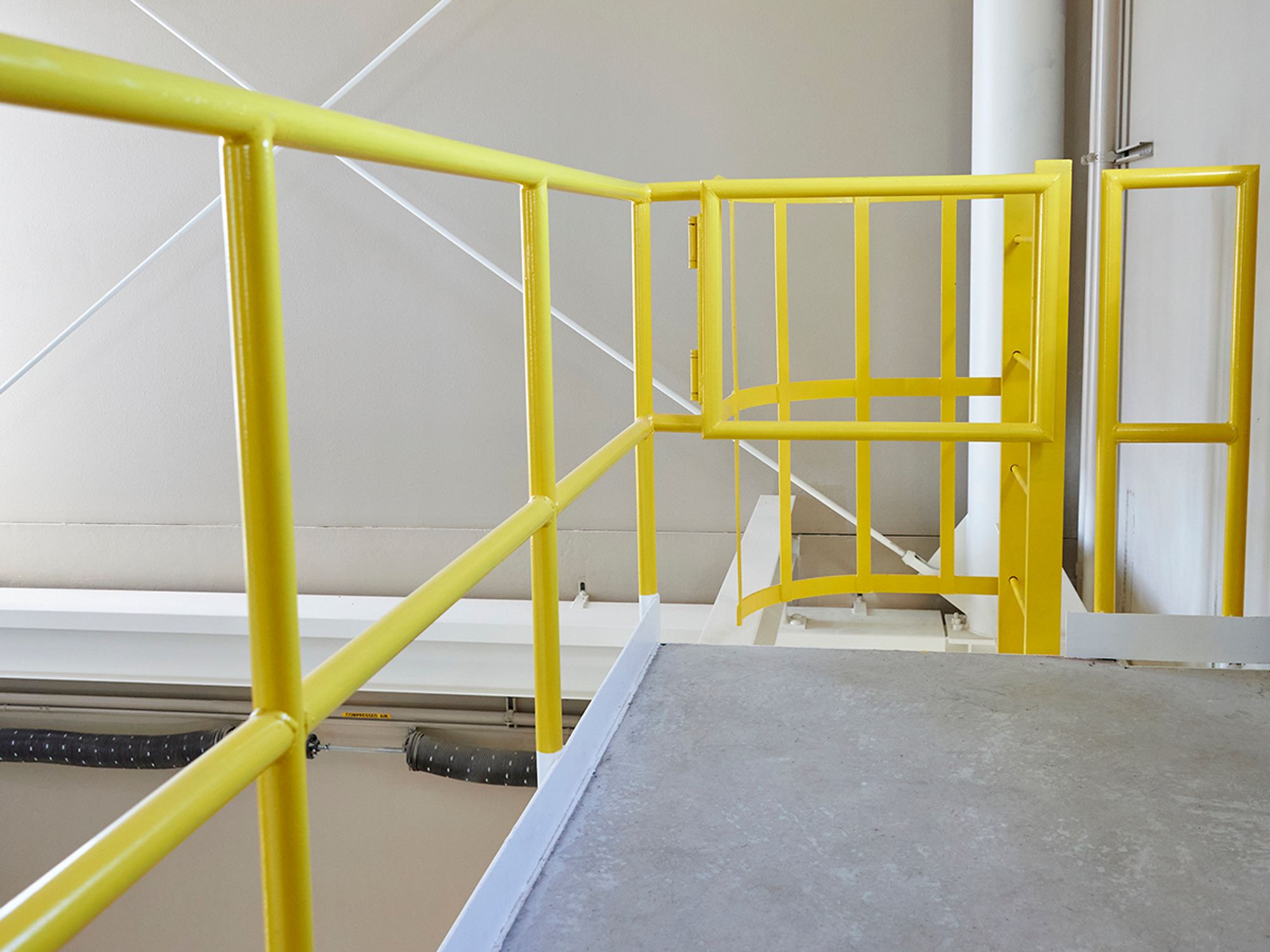Guarding at the top

- Entrances at the top of fixed ladders are considered holes, and fall protection standards for holes apply.
- A fixed ladder entry point must have a self-closing gate or an offset passage.
The entrance at the top of a fixed ladder is considered a ladderway “hole.” Fall protection requirements for holes are found under 1910.28(b)(3). It requires that “each employee is protected from tripping into a ladderway floor hole or ladderway platform hole by a guardrail system and toeboards erected on all exposed sides, except at the entrance to the hole, where a self-closing gate or an offset must be used.”
Also, guardrail system requirements specific to holes are found in 1910.29(b)(13) which says, “when guardrail systems are used around holes that serve as points of access (such as ladderways), the guardrail system opening must have a self-closing gate ... or is offset to prevent an employee from walking or falling into the hole.” All fixed ladder entrances, regardless of height, must be guarded in this manner.
An offset passage may be used in lieu of a self-closing gate. The Occupational Safety and Health Administration (OSHA) does not provide a definition of “offset passage” but does say that the barrier must prevent a person from walking directly into the opening of a hole. This is usually an L-shaped guardrail so there is no direct entrance/passage to the opening at the top of the fixed ladder. Essentially, the worker would not be able to directly access the ladder opening without walking around the inside railing that is offset from the outside railing, thus affording a protective barrier.
Safety chains are not allowed as fall protection at fixed ladder entrances. OSHA believes that self-closing gates and offsets are passive fall protection methods that automatically restore guardrail protection as soon as the worker passes through the opening or offset area. Neither method requires the worker to take any action to restore that protection. However, if employers provide double chains at entrances to ladderway floor or platform holes, employees would have to remove the chains and reattach them once they pass through the opening. If workers forget or fail to reattach the chains, they and others in the area could fall through the hole. Workers also are at increased risk of falling once they enter the area inside the guardrails to climb down the ladder because they have to turn around and away from the hole to reattach the chains and risk falling backward into the hole.
